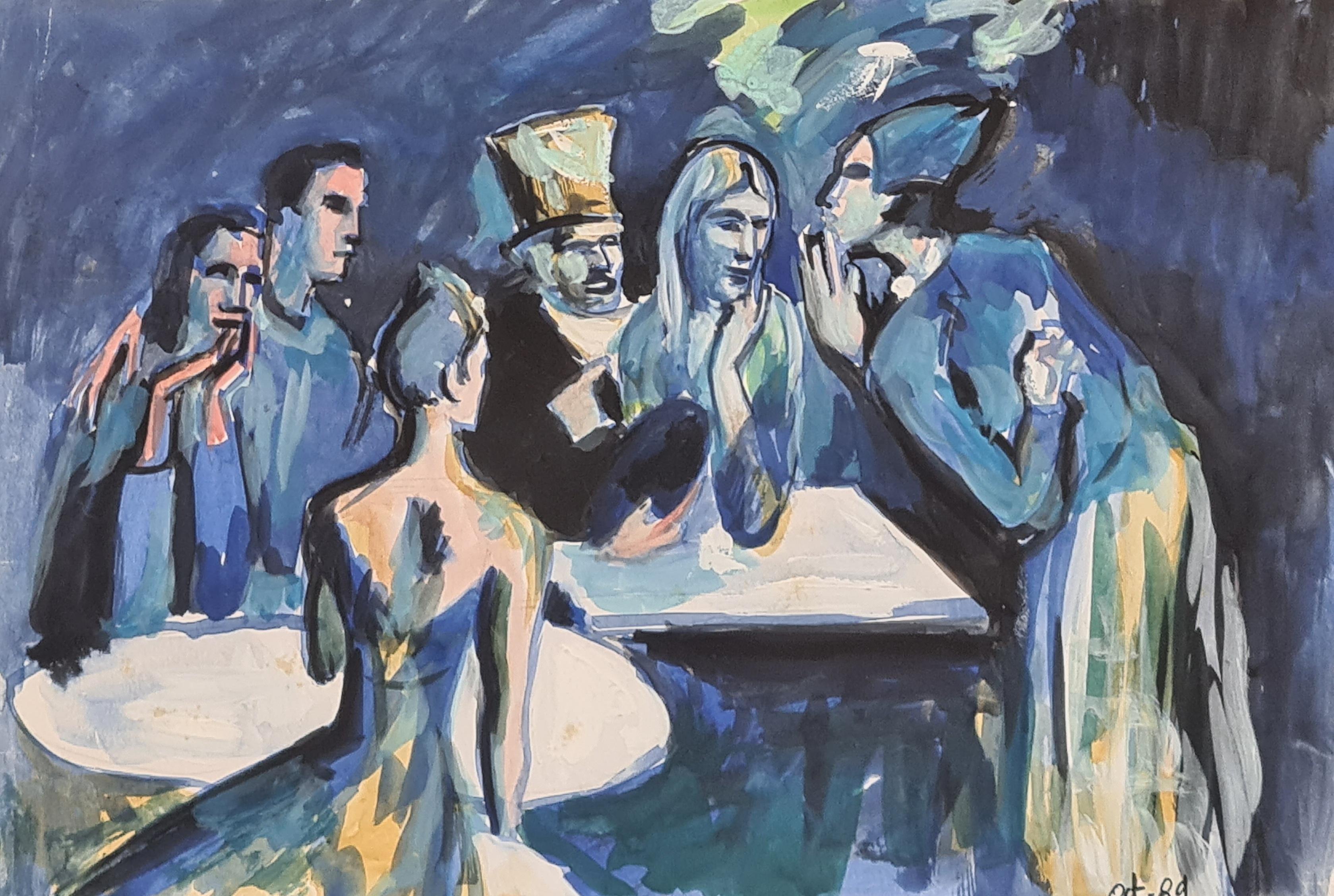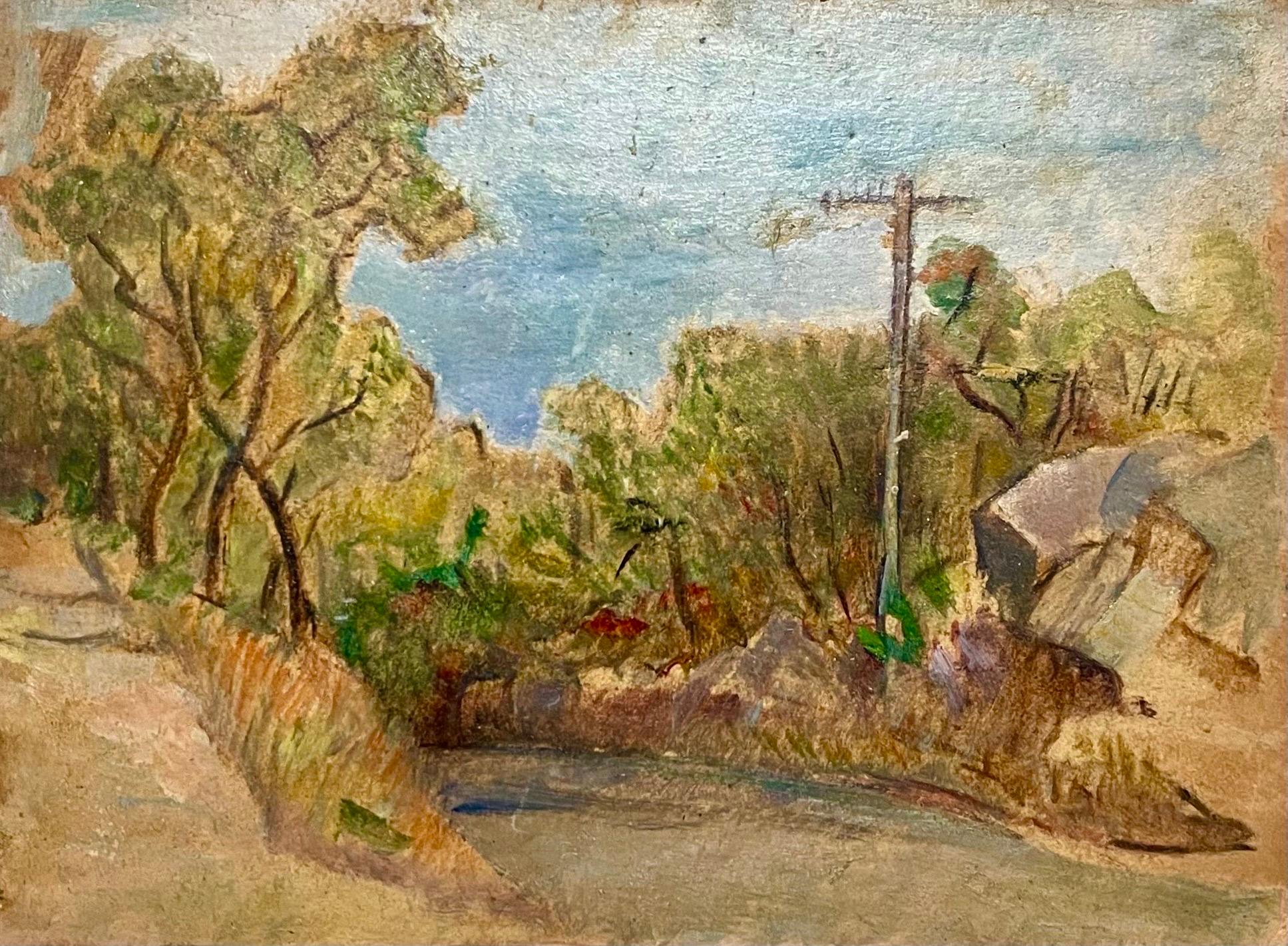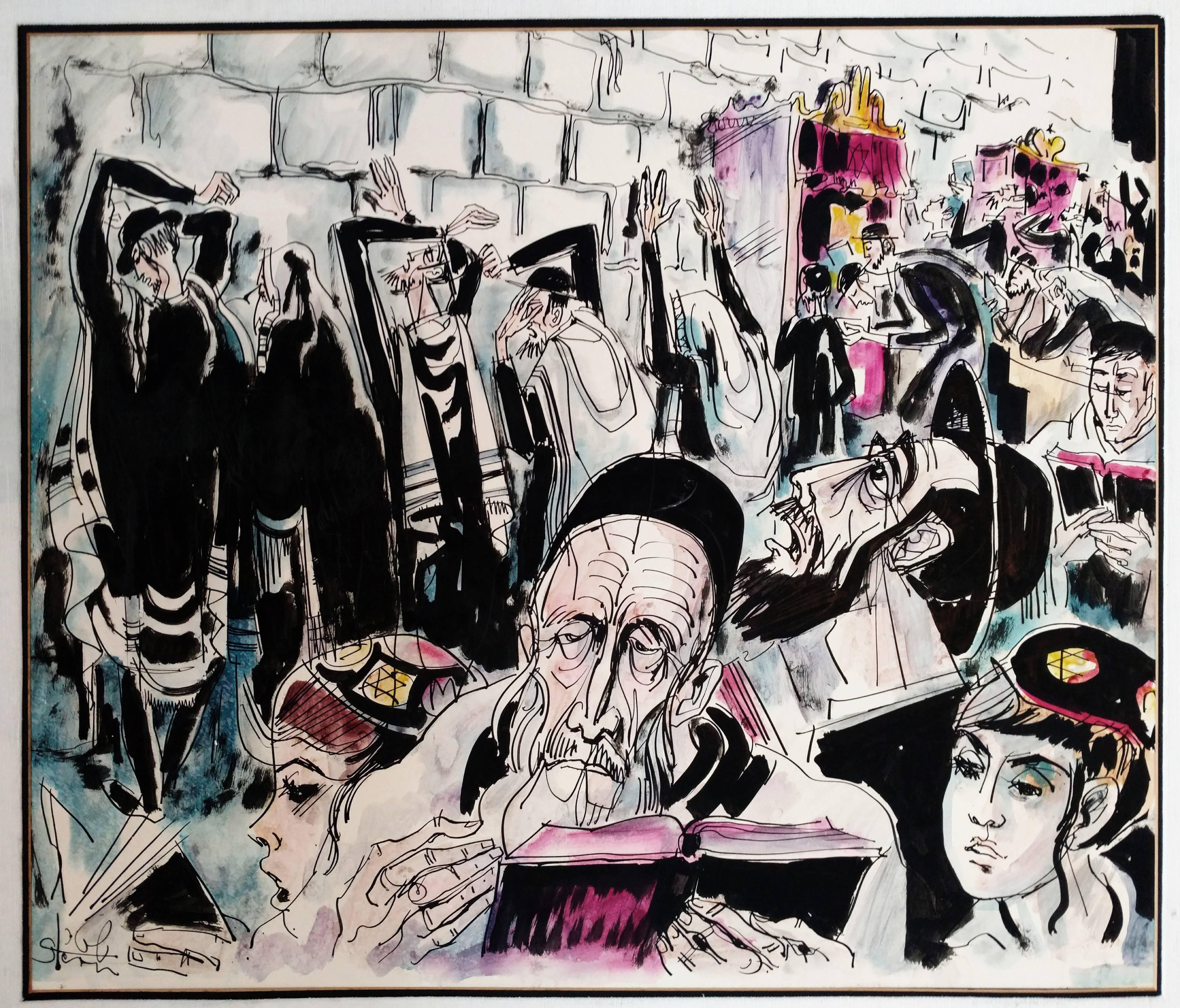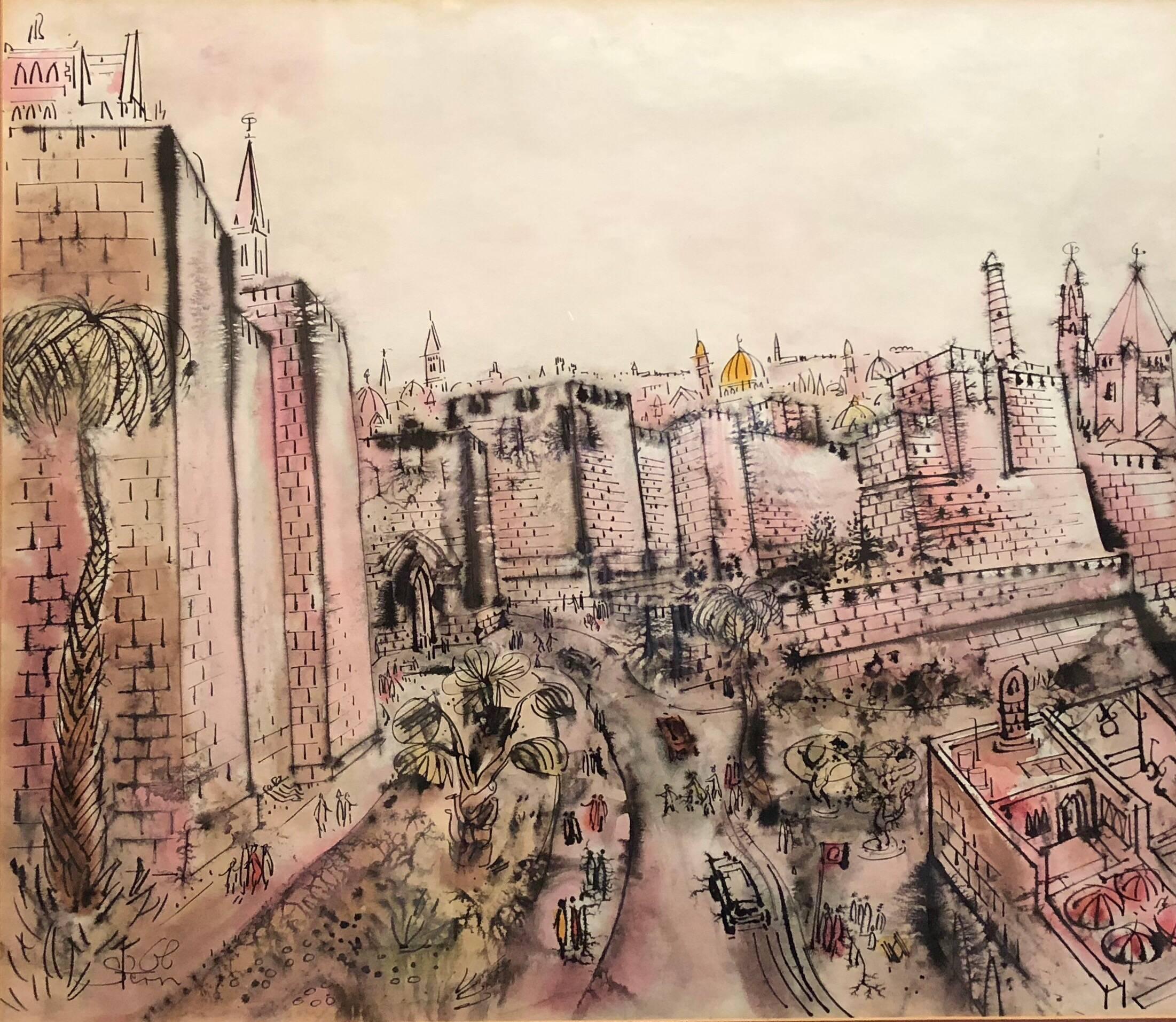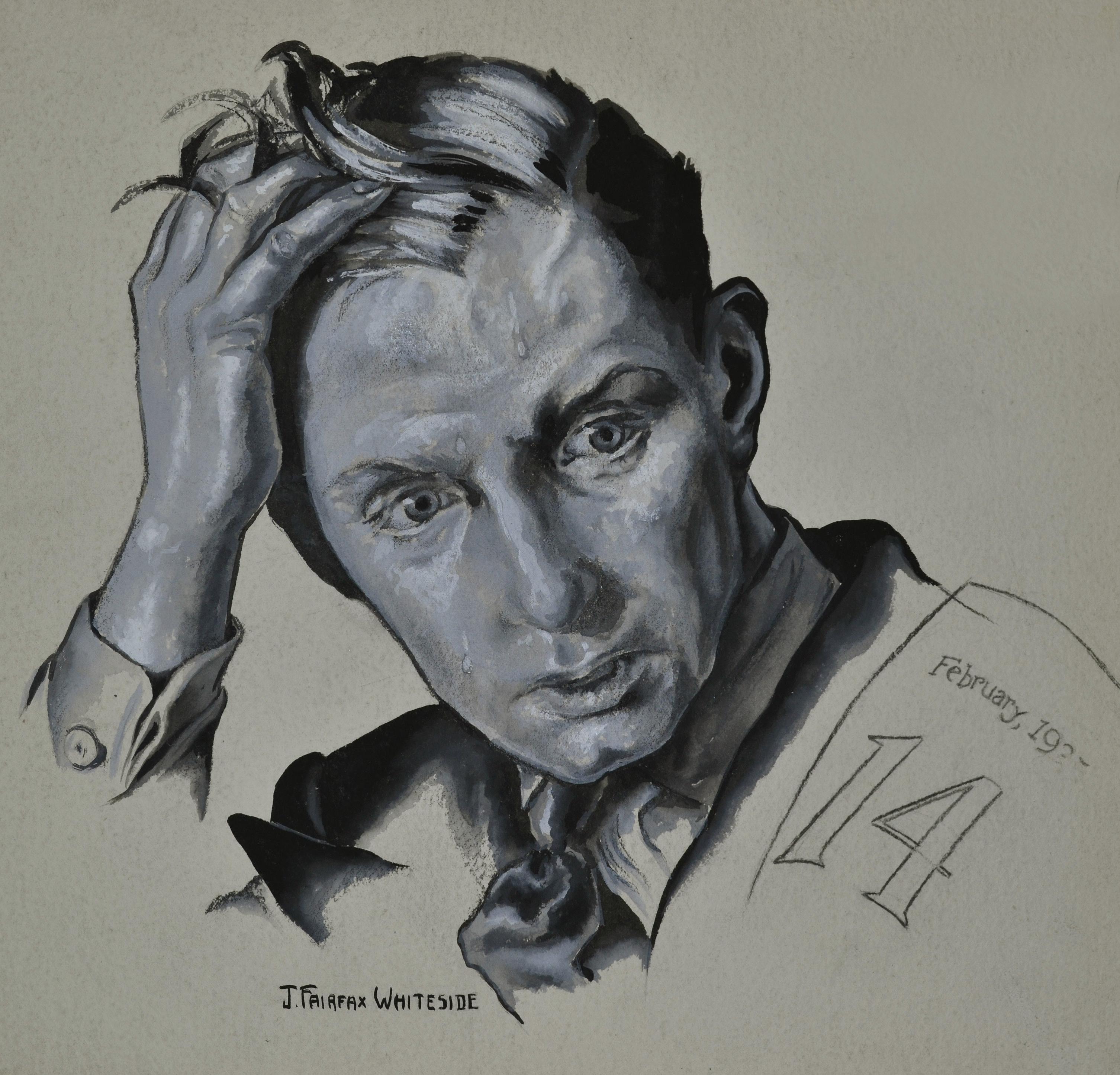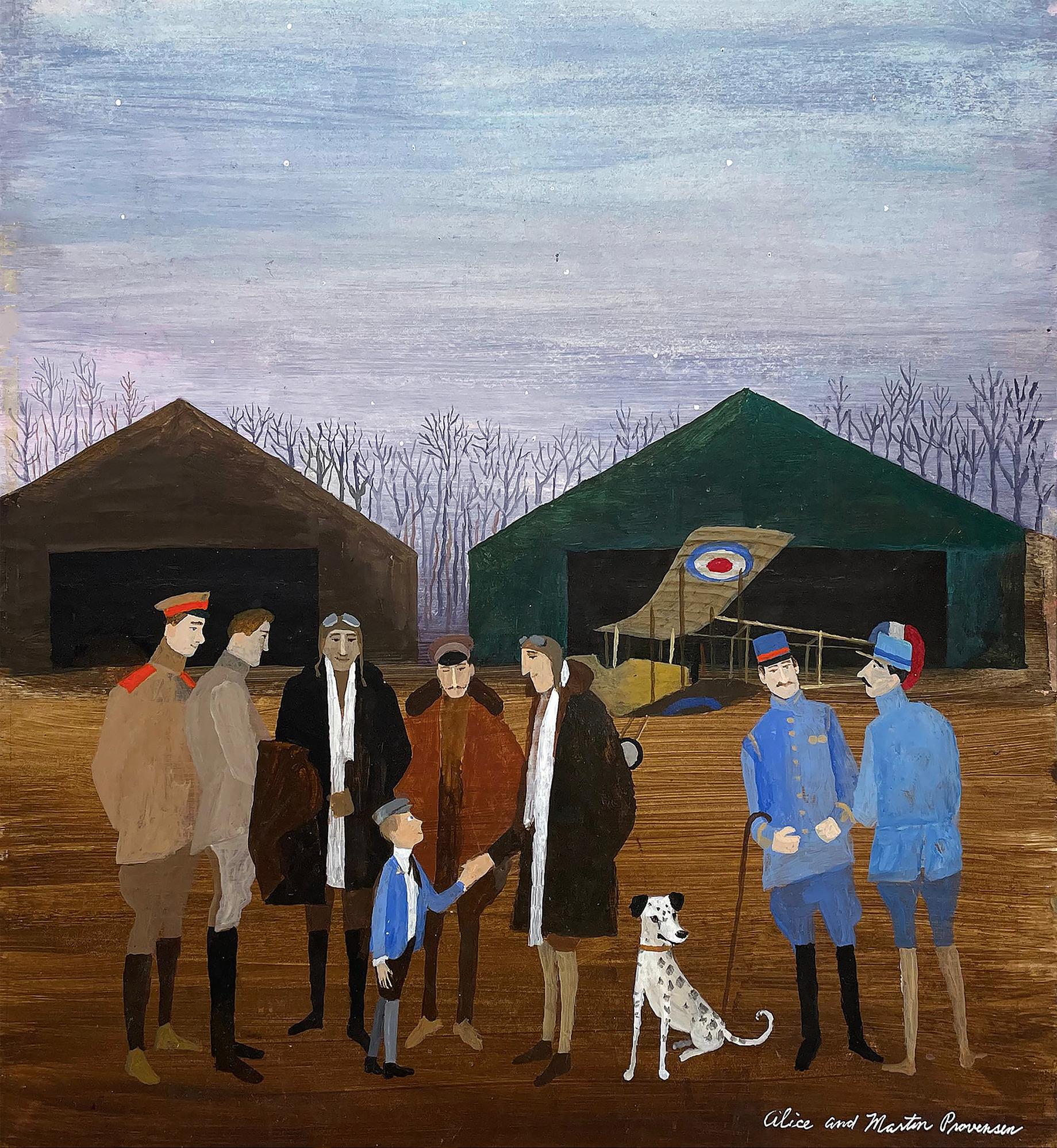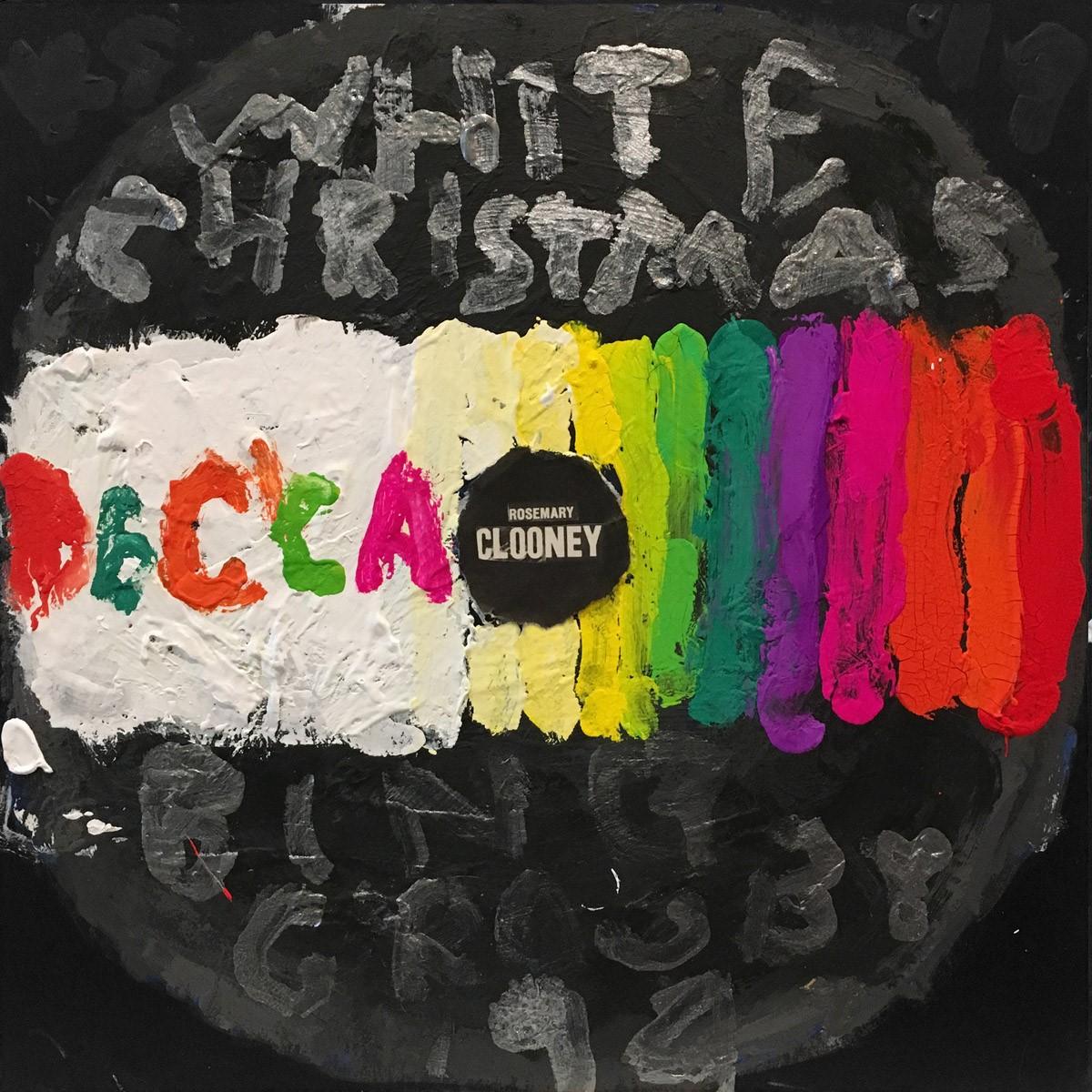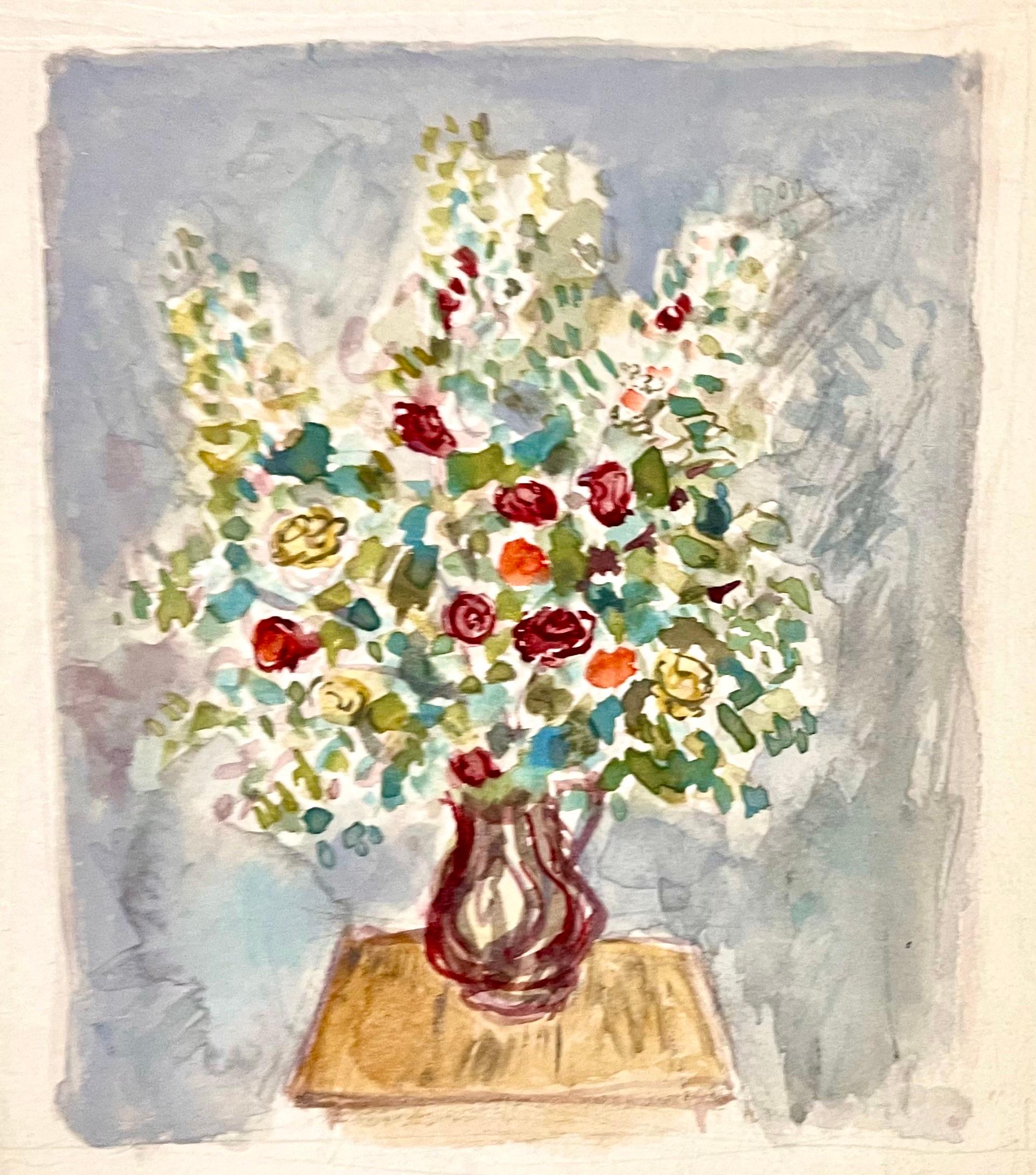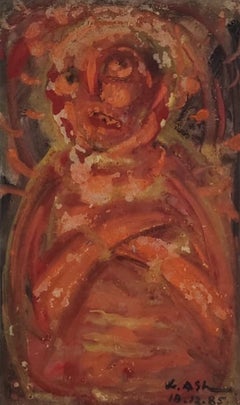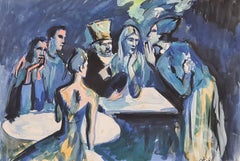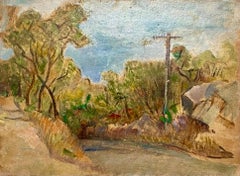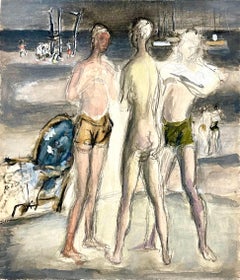
Cityscape Painting, Gouache on board, Brown, Green by Master Artist "In Stock"
Want more images or videos?
Request additional images or videos from the seller
1 of 9
B. PrabhaCityscape Painting, Gouache on board, Brown, Green by Master Artist "In Stock" 1966
1966
About the Item
About the Seller
4.9
Vetted Seller
These experienced sellers undergo a comprehensive evaluation by our team of in-house experts.
Established in 2004
1stDibs seller since 2017
118 sales on 1stDibs
Typical response time: 17 hours
More From This SellerView All
- Untitled, Figurative, Gouache on Paper by Gobardhan Ash "In Stock"By Gobardhan AshLocated in Kolkata, West BengalGobardhan Ash - Untitled - Gouache on Paper 15 x 9 inches (unframed size) ( Unframed & Delivered ) Style : Regarded as a pioneer of modern Indian art, Ash’s contribution at the time...Category
1980s Modern Figurative Paintings
MaterialsPaper, Gouache
- Untitled, Figurative, Gouache on Paper, Orange by Gobardhan Ash "In Stock"By Gobardhan AshLocated in Kolkata, West BengalGobardhan Ash - Untitled - Gouache on Paper 15 x 9 inches, 18-12-1985 ( Unframed & Delivered ) Style : Regarded as a pioneer of modern Indian art, ...Category
1980s Modern Figurative Paintings
MaterialsPaper, Gouache
- In the Village, Gouache on Paper, Pink & Red color by Gobardhan Ash "In Stock"By Gobardhan AshLocated in Kolkata, West BengalGobardhan Ash - Untitled - Gouache on Paper 10 x 15 inches (unframed size) Style : Regarded as a pioneer of modern Indian art, Ash’s contribution at the time when India witnessed the advent of Western modernism is significant and colossal. His work was exploratory, visionary and inspiring. He printed with bold courage and a free spirit, never yielding to the rules set by official art. He rejected the preconceived notions of how an artist ought to render his subjects and inevitably rebelled against the academic rules “ If we look at nature in the open, we do not see individual objects each with its own colors but rather a bright medley of tints which blend in our eyes, in our minds.” – Gobardhan Ash (The Statesman, April 24, 1994). His verbal imagery alluded to what was real and relevant in India yet transcended to communicate a deeper, universal message about the human spirit. Disillusioned with the limits and constraints he faced, Ash withdrew into his private introspective world to explore his own mode of artistic expression. And although it was the convention then to paint divinities or exotic female figures on their way to the temple, Ash embarked on a new approach altogether to paint farmers toiling in the fields, workers engaged in intense labor to earn their living, thereby setting a new trend of socio-realistic art in India. In 1945, Ash was brought into the public eye when the progressive writers Association discovered his series of paintings on the Bengal famine. The paintings depict, if not document, the ravages of the 1943 catastrophe. In juxtaposition to the famine series, his impressionist and post impressionist gouaches during the late 40s come as an interesting antithesis. Colors, rich and vibrant, come alive in a pulsating tone to dominate the entire painting. Ash never subscribed to a stringent artistic form or technique. Rather, his works from the 80s display yet another intriguing and jarringly different style in his treatment of portraiture. His colors, with the exception of the apparent outlines, are reduced to smudges and smears so that the painting appear to originate from stained canvas. His subjects, spectral figures that engage and draw us within their profound state of despair and helplessness. To characterize the life works of Gobardhan Ash is to recognize the complexity and spontaneity of his ideas and the enormous richness of his style. An artist who devoted his entire life to art, his paintings have transited and evolved from monochromatic sketches and landscape to portraiture; from naturalistic real-life depictions to abstract expressionism. Whatever the genre style-Ash has demonstrated an eloquent mastery over the diverse style, techniques and medias employed, as evident in the vast retrospective collection. His paintings are conceptual and purposeful, displaying a unique individuality. His art expounds a frank desire to convey the value of uncompromising artistic sincerity. Gobardhan Ash remains today a prolific artist of his time. About the Artist & his works : Born : Regarded as a pioneer of modern Indian art, Gobardhan Ash (1907-1996) was born at the village of Begampur in Hoogly district of West Bengal.. Family : His father was Haricharan Ash and mother Gouri Devi. He spent all his life in this village and died here in 1996 at the matured age...Category
1980s Modern Figurative Paintings
MaterialsPaper, Pastel, Gouache
- Ganapati, Mixed Media on Board, Green, Yellow, Brown by Badri Narayan "In Stock"By Badri NarayanLocated in Kolkata, West BengalBadri Narayan - Ganapati - 10.25 x 8.5 inches ( unframed size) - 20.25 x 18.5 inches ( Framed ) Condition: A very small tear on the top le...Category
1950s Modern Figurative Paintings
MaterialsBoard, Mixed Media, Watercolor, Paper
- Couple, Watercolour & Gouache on Paper, Red, Blue Contemporary Artist “In Stock"By Bhaskar ChitrakarLocated in Kolkata, West BengalBhaskar Chitrakar - Couple - 15 x 11 inches (unframed size) Watercolor & Gouache on Paper, 2022 About the Artist & his works : Born : 1978. Bhaskar...Category
2010s Contemporary Figurative Paintings
MaterialsPaper, Watercolor, Gouache
- Meghdootam-1, Gouache & Gold Leaf on Handmade Paper by Indian Artist "In Stock"By Yugal Kishor SharmaLocated in Kolkata, West BengalYugal Kishor Sharma - Meghdootam-1 - 15 x 15 inches (unframed size) Gouache & Gold Leaf on Handmade Paper. About thwe Artist & his works : Born : Rajasthan in 1959. Education : Post Graduation (Painting) M.L.S. University, Udaipur Ph.D (Painting) M.L.S. University, Udaipur. Fellowship : 1989-1990 National Jr. Fellowship by M-HRD,GoI-New Delhi. Work Experience : 1970-80 : In traditional miniature painting of Nathdwara, School, Nathdwara 1982-83 : In graphics art, Lalit Kala Academy’s Artists Studios, Garhi, New Delhi. Participation : 1980-2001 9th International Exhibition of Art AIFACS. 5th International Biennial of Print Art-2001,Bhopal National Exhibition of Art, Lalit Kala Academy, New Delhi. Selected Exhibitions : 1992 & 94 : The Heritage, Chennai 1991, 2000 & 03 : Jehangir Art Gallery, Mumbai 2002 : Birla Academy of Art & Culture, Kolkata 2004 : Harmony Show by Tina Ambani, Mumbai 2005 : Exhibition at Kriti Gallery, Varanasi. Awards : 1980 : Maharana Raj Singh Award, Mewar Foundation, Udaipur 1983 & 2001 : State Award of Art, Rajasthan Lalit Kala Academy, Jaipur 1989 : All India Silver...Category
2010s Contemporary Figurative Paintings
MaterialsGold Leaf
You May Also Like
- The Circus Troupe and Saltimbanque after Pablo PicassoBy (after) Pablo PicassoLocated in Cotignac, FRLate 20th Century gouache work on card of a group of circus performers around a table after Pablo Picasso. The work is dated bottom right. A charming watercolour and gouache of a tr...Category
Late 20th Century Modern Figurative Paintings
MaterialsWatercolor, Gouache, Cardboard
- Simka Simkhovitch WPA Artist Oil Painting Gouache American Modernist PowerlineBy Simka SimkhovitchLocated in Surfside, FLSimka Simkhovitch (Russian/American 1893 - 1949) This came with a small grouping from the artist's family, some were hand signed some were not. These were studies for larger paintings. Simka Simkhovitch (Симха Файбусович Симхович) (aka Simka Faibusovich Simkhovich) (Novozybkov, Russia May 21, 1885 O.S./June 2, 1885 N.S.—Greenwich, Connecticut February 25, 1949) was a Ukrainian-Russian Jewish artist and immigrant to the United States. He painted theater scenery in his early career and then had several showings in galleries in New York City. Winning Works Progress Administration (WPA) commissions in the 1930s, he completed murals for the post offices in Jackson, Mississippi and Beaufort, North Carolina. His works are in the permanent collections of the Dallas Museum of Art, the National Museum of American Art and the Whitney Museum of American Art. Born outside Kyiv (Petrograd Ukraine) into a Jewish family who owned a small department store. During a severe case of measles when he was seven, Simcha Simchovitch sketched the views outside his window and decided to become an artist, over his father's objections. Beginning in 1905, he studied at the Grekov Odessa Art School and upon completion of his studies in 1911 received a recommendation to be admitted to the Imperial Academy of Arts. Though he enrolled to begin classes in architecture, painting, and sculpture at the Imperial Academy, he was dropped from the school roster in December because of the quota on the number of Jewish students and drafted into the army. Simchovitch served as a private in the 175th Infantry Regiment Baturyn [ru] until his demobilization in 1912. Re-enrolling in the Imperial Academy, he audited classes. Simka Simkhovitch exhibited paintings and sculptures in 1918 as part of an exhibition of Jewish artists and in 1919 placed 1st in the competition "The Great Russian Revolution" with a painting called "Russian Revolution" which was hung in the State Museum of Revolution. In 1922, Simkha Simkhovitch exhibited at the International Book Fair in Florence (Italian: Fiera Internazionale del Libro di Firenze). In 1924, Simkhovitch came to the United States to make illustrations for Soviet textbooks and decided to immigrate instead. Initially he supported himself by doing commercial art and a few portrait commissions. In 1927, he was hired to paint a screen for a scene in the play "The Command to Love" by Fritz Gottwald and Rudolph Lothar which was playing at the Longacre Theatre on Broadway. Art dealers began clamoring for the screen and Simkhovitch began a career as a screen painter for the theater. Catching the attention of the screenwriter, Ernest Pascal, he worked as an illustrator for Pascal, who then introduced him to gallery owner, Marie Sterner. Simkhovitch's works appeared at the Marie Sterner Gallery beginning with a 1927 exhibit and were repeated the following year. Simkhovitch had an exhibit in 1929 at Sterner's on circus paintings. In 1931, he held a showing of works at the Helen Hackett Gallery, in New York City and later that same year he was one of the featured artists of a special exhibit in San Francisco at the California Palace of the Legion of Honor in Lincoln Park. The exhibit was coordinated by Marie Sterner and included four watercolors, including one titled "Nudes". He is of the generation of Russian Soviet artists such as Isaac Pailes, Serge Charchoune, Marc Chagall, Chana Orloff, Isaac Ilyich Levitan, and Ossip Zadkine. In 1936, Simkhovitch was selected to complete the mural for the WPA Post office project in Jackson, Mississippi. The mural was hung in the post office and courthouse in 1938 depicted a plantation theme. Painted on the wall behind the judge’s bench, “Pursuits of Life in Mississippi”, a depiction of black workers engaged in manual labor amid scenes of white professionals and socialites, was eventually covered over in later years during renovations due to its stereotypical African American imagery. Simka painted what he thought was typical of Jackson. His impression of pre-civil rights Mississippi was evidently Greek Revival column houses, weeping willow trees, working class families, and the oppression of African Americans. He painted African American men picking cotton, while a white man took account of the harvest and a white judge advised a white family, calling it Pursuits of Life in Mississippi. Though clearly endorsed by the government and initially generally well-received, the mural soon raised concerns with locals as the climate toward racial segregation began to change. The main concern was whether depictions that show African Americans in subjugated societal roles should be featured in a courtroom. The following year, his painting "Holiday" won praise at an exhibition in Lincoln, Nebraska. In 1940, Simkhovitch's second WPA post office project was completed when four murals, "The Cape Lookout Lighthouse and the Orville W. Mail Boat", "The Wreck of the Crissie Wright", "Sand Ponies" and "Canada Geese" were installed in Beaufort, North Carolina. The works were commissioned in 1938 and did not generate the controversy that the Jackson mural had. The main mural is "The Wreck of the Crissie Wright" and depicts a shipwreck which had occurred in Beaufort in 1866. "The Cape Lookout Lighthouse and the Orville W. Mail Boat" depicted the lighthouse built in 1859 and the mail boat that was running mail during the time which Simkhovitch was there. The boat ran mail for the area until 1957. "Sand Ponies" shows the wild horses common to the North Carolina barrier islands and "Canada Geese" showed the importance of hunting and fishing in the area. All four murals were restored in the 1990s by Elisabeth Speight, daughter of two other WPA muralists, Francis Speight...Category
1930s American Modern Landscape Paintings
MaterialsGouache, Oil, Board
- Simka Simkhovitch WPA W/C Painting Gouache American Modernist Beach Scene NudeBy Simka SimkhovitchLocated in Surfside, FLSimka Simkhovitch (Russian/American 1893 - 1949) This came with a small grouping from the artist's family, some were hand signed some were not. These were studies for larger paintings. This is a watercolor and gouache beach scene three young men bathing...Category
1930s American Modern Nude Paintings
MaterialsWatercolor, Gouache, Board
- Simka Simkhovitch WPA Artist Painting Gouache American Modernist Beach SceneBy Simka SimkhovitchLocated in Surfside, FLSimka Simkhovitch (Russian/American 1893 - 1949) This came with a small grouping from the artist's family, some were hand signed some were not. These were studies for larger paintings. Simka Simkhovitch (Симха Файбусович Симхович) (aka Simka Faibusovich Simkhovich) (Novozybkov, Russia May 21, 1885 O.S./June 2, 1885 N.S.—Greenwich, Connecticut February 25, 1949) was a Ukrainian-Russian Jewish artist and immigrant to the United States. He painted theater scenery in his early career and then had several showings in galleries in New York City. Winning Works Progress Administration (WPA) commissions in the 1930s, he completed murals for the post offices in Jackson, Mississippi and Beaufort, North Carolina. His works are in the permanent collections of the Dallas Museum of Art, the National Museum of American Art and the Whitney Museum of American Art. Born outside Kyiv (Petrograd Ukraine) into a Jewish family who owned a small department store. During a severe case of measles when he was seven, Simcha Simchovitch sketched the views outside his window and decided to become an artist, over his father's objections. Beginning in 1905, he studied at the Grekov Odessa Art School and upon completion of his studies in 1911 received a recommendation to be admitted to the Imperial Academy of Arts. Though he enrolled to begin classes in architecture, painting, and sculpture at the Imperial Academy, he was dropped from the school roster in December because of the quota on the number of Jewish students and drafted into the army. Simchovitch served as a private in the 175th Infantry Regiment Baturyn [ru] until his demobilization in 1912. Re-enrolling in the Imperial Academy, he audited classes. Simka Simkhovitch exhibited paintings and sculptures in 1918 as part of an exhibition of Jewish artists and in 1919 placed 1st in the competition "The Great Russian Revolution" with a painting called "Russian Revolution" which was hung in the State Museum of Revolution. In 1922, Simkha Simkhovitch exhibited at the International Book Fair in Florence (Italian: Fiera Internazionale del Libro di Firenze). In 1924, Simkhovitch came to the United States to make illustrations for Soviet textbooks and decided to immigrate instead. Initially he supported himself by doing commercial art and a few portrait commissions. In 1927, he was hired to paint a screen for a scene in the play "The Command to Love" by Fritz Gottwald and Rudolph Lothar which was playing at the Longacre Theatre on Broadway. Art dealers began clamoring for the screen and Simkhovitch began a career as a screen painter for the theater. Catching the attention of the screenwriter, Ernest Pascal, he worked as an illustrator for Pascal, who then introduced him to gallery owner, Marie Sterner. Simkhovitch's works appeared at the Marie Sterner Gallery beginning with a 1927 exhibit and were repeated the following year. Simkhovitch had an exhibit in 1929 at Sterner's on circus paintings. In 1931, he held a showing of works at the Helen Hackett Gallery, in New York City and later that same year he was one of the featured artists of a special exhibit in San Francisco at the California Palace of the Legion of Honor in Lincoln Park. The exhibit was coordinated by Marie Sterner and included four watercolors, including one titled "Nudes". He is of the generation of Russian Soviet artists such as Isaac Pailes, Serge Charchoune, Marc Chagall, Chana Orloff, Isaac Ilyich Levitan, and Ossip Zadkine. In 1936, Simkhovitch was selected to complete the mural for the WPA Post office project in Jackson, Mississippi. The mural was hung in the post office and courthouse in 1938 depicted a plantation theme. Painted on the wall behind the judge’s bench, “Pursuits of Life in Mississippi”, a depiction of black workers engaged in manual labor amid scenes of white professionals and socialites, was eventually covered over in later years during renovations due to its stereotypical African American imagery. Simka painted what he thought was typical of Jackson. His impression of pre-civil rights Mississippi was evidently Greek Revival column houses, weeping willow trees, working class families, and the oppression of African Americans. He painted African American men picking cotton, while a white man took account of the harvest and a white judge advised a white family, calling it Pursuits of Life in Mississippi. Though clearly endorsed by the government and initially generally well-received, the mural soon raised concerns with locals as the climate toward racial segregation began to change. The main concern was whether depictions that show African Americans in subjugated societal roles should be featured in a courtroom. The following year, his painting "Holiday" won praise at an exhibition in Lincoln, Nebraska. In 1940, Simkhovitch's second WPA post office project was completed when four murals, "The Cape Lookout Lighthouse and the Orville W. Mail Boat", "The Wreck of the Crissie Wright", "Sand Ponies" and "Canada Geese" were installed in Beaufort, North Carolina. The works were commissioned in 1938 and did not generate the controversy that the Jackson mural had. The main mural is "The Wreck of the Crissie Wright" and depicts a shipwreck which had occurred in Beaufort in 1866. "The Cape Lookout Lighthouse and the Orville W. Mail Boat" depicted the lighthouse built in 1859 and the mail boat that was running mail during the time which Simkhovitch was there. The boat ran mail for the area until 1957. "Sand Ponies" shows the wild horses common to the North Carolina barrier islands and "Canada Geese" showed the importance of hunting and fishing in the area. All four murals were restored in the 1990s by Elisabeth Speight, daughter of two other WPA muralists, Francis Speight...Category
1930s American Modern Nude Paintings
MaterialsGouache, Board
- Rabbi in Prayer, Western Wall, Jerusalem Bar Mitzva Scene, JudaicaBy Jossi SternLocated in Surfside, FLVibrant Gouache and watercolor painting by israeli master JOSSI STERN. on paper mounted to board. Hungary, b. 1923, d. 1992 Jossi (Yossi) Stern, son of David and Katerina, was born in the Bakon Hills of Hungary, in 1923. He was already drawing when at the age of ten he moved with his family from the Bakon Hill region to the considerably more cosmopolitan Budapest. Recognizing the looming threat of Hitler and the pending Nazi invasion of Hungary, in 1940, at the age of seventeen, the young artist made his way to Palestine aboard the Sakaria, an old ship heavily crowded with 2,300 other refugees. Before reaching the shores of Palestine, then under the British Mandate, the British Navy...Category
20th Century Modern Figurative Paintings
MaterialsWatercolor, Gouache, Illustration Board
- Old City Jerusalem City Walls landscape Scene Painting, JudaicaBy Jossi SternLocated in Surfside, FLVibrant Gouache and watercolor painting by Israeli master JOSSI STERN. on paper mounted to board. 31x34.75, 23.5x27.5 without frame. Hungary, b. 1923, d. 1992 Jossi (Yossi) Stern, son of David and Katerina, was born in the Bakon Hills of Hungary, in 1923. He was already drawing when at the age of ten he moved with his family from the Bakon Hill region to the considerably more cosmopolitan Budapest. Recognizing the looming threat of Hitler and the pending Nazi invasion of Hungary, in 1940, at the age of seventeen, the young artist made his way to Palestine aboard the Sakaria, an old ship heavily crowded with 2,300 other refugees. Before reaching the shores of Palestine, then under the British Mandate, the British Navy intercepted the ship and declared Stern and all those aboard illegal immigrants. Stern was sent to a prison camp where he remained incarcerated by the British for six months. In 1943, having spent a few years doing agricultural work, Stern was encouraged by close friends who recognized his artistic talent to enroll in the prestigious Bezalel School of the Arts in Jerusalem. An outstanding student, he eventually became a highly respected teacher of Graphic Arts at Bezalel. Stern is recognized in Israel as having been one of the country's premier artists...Category
20th Century Modern Figurative Paintings
MaterialsWatercolor, Gouache, Illustration Board
